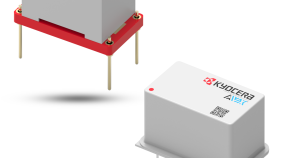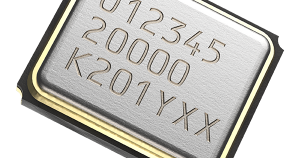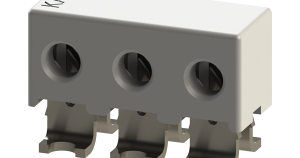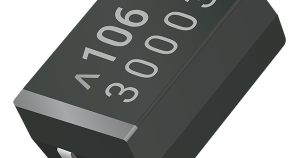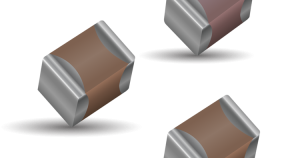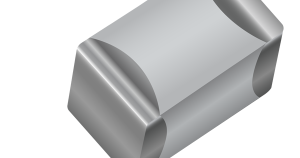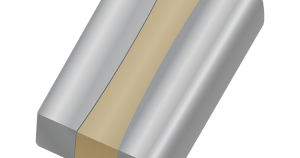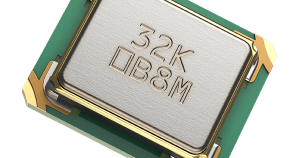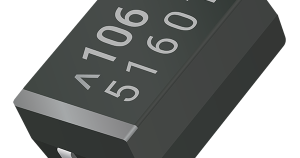The new high-performance, voltage-controlled KOV and KLN Series OCXOs employ modern layout topologies and robust designs backed by more than 90 years’ experience in the frequency control solutions industry and deliver superior performance in a wide variety of networking, industrial, medical, test and measurement, military, aerospace, and oil and gas applications. KYOCERA AVX, a leading global manufacturer of advanced electronic components engineered to accelerate technological innovation and build a better future, has released its first oven-controlled crystal oscillator (OCXO) products. The new high-performance OCXO products are the latest addition to the company’s line of frequency control solutions and are backed by more than 90 years of experience serving that industry and manufactured in the USA. OCXOs are temperature-controlled devices that
News / Events / Press
Properties and Characteristics of Crystal Units Written By: Wataru Muraoka Abstract: Numerous devices in people‘s lives today are becoming more sophisticated. As a result, the number of crystal devices installed is increasing. For example, with the evolution of autonomous driving, we are using crystal devices for many functions such as sensor systems to detect distance, camera systems to capture images, image processing systems to process captured images, and communication systems to communicate many of those digital data in and out of the vehicle at high speed. Crystal Units are a piezoelectric element which produces electricity on the surface when mechanical pressure is applied, and when electricity is applied it vibrates in a certain manner. A Crystal Unit is a product
The new four- and five-position 9176-700 Series connectors provide robust and reliable gas-tight wire-to-board connections ideal for an even broader range of demanding automotive, transportation, industrial, lighting, and medical applications. FOUNTAIN INN, S.C. (March 30, 2023) – KYOCERA AVX, a leading global manufacturer of advanced electronic components engineered to accelerate technological innovation and build a better future, added new four- and five-position models to its 9176-700 Series capped insulation displacement contact (IDC) connectors for 18–24AWG wire, which are engineered to satisfy the demanding requirements of automotive, transportation, industrial, lighting, and medical applications. 9176-700 Series capped IDC connectors have a user-friendly, low-profile surface-mount form factor with an integrated termination/retention cap that allows users to simply insert a wire into the contact
The latest release of the globally renowned software, Ansys 2023 R1, features direct links to simulation models for 13 of KYOCERA AVX’s most popular embedded antennas. These models are also available for Ansys versions 2019 R3 to 2022 R2, and a complete range of KYOCERA AVX embedded antenna models will soon be available for all of these versions. FOUNTAIN INN, S.C. (March 28, 2023) – KYOCERA AVX, a leading global manufacturer of advanced electronic components engineered to accelerate technological innovation and build a better future, is proud to announce that direct links to simulation models for its most popular embedded antennas are available in the latest release of the globally renowned Ansys HFSS 3D electromagnetic simulation software, Ansys 2023 R1.
Passive Component Advancements for SPE Connectors and Circuit Protection Devices Written By: Daniel West | Julian Wilson Abstract: As Single Pair Ethernet (SPE) begins to roll out there will be a need for easy to implement, yet reliable wire-to-board interconnects. Purchasing finished cable and connector assemblies is not always economical or viable. However, it is also undesirable to work with time consuming and difficult to process connectors. Insulation Displacement Connectors (IDC) and Press-Fit technology (images below) require no crimping or soldering processes, and is easily converted to a streamlined process, while maintaining the versatility of cable lengths and positioning. In addition to reliable retention forces and gas tight seals afforded by the cold weld mechanism of IDC, signal integrity is
Tantalum Capacitors for Electric Vehicles Written By: Jeff Lee Abstract: An electric vehicle is a car powered by electricity unlike internal combustion locomotives that obtain driving energy by burning fossil fuels, they rotate the motor with electricity accumulated in the battery to obtain driving energy. Electric vehicles are largely composed of on-board chargers (OBC), electric power control units (EPCUs), motors, speed reducers, and high voltage battery. The motor of an electric vehicle is a high-efficiency and high-power driving motor and has high output and rotational power. Unlike internal combustion vehicle engines, the electric motor can be made to minimize noise and vibration generation while driving.
DC Bias Characteristics of Ceramic Capacitors Written By: Simon Cen Abstract: Most electrical engineers are at least familiar with the different ratings of ceramic capacitors, such as C0G and X7R. In many applications, the meaning of these character codes is relatively unimportant as some other factor, like price or size, may be driving component selection. Designers must be wary, however, as choosing the wrong combination of capacitor dielectric and applied voltage can have critical performance implications for the associated circuit. For class two dielectrics, the change in bulk capacitance with DC bias can be substantial. Understanding why this happens and how to choose a proper ceramic capacitor can eliminate this common pitfall.
The new range includes wet, conductive polymer, and hybrid aluminum electrolytic capacitors with commercial and industrial reliability levels and competitive pricing, and it offers a comprehensive selection of CV values and cases sizes with one of the shortest lead times of any competing capacitor available on the market. FOUNTAIN INN, S.C. (February 21, 2023) – KYOCERA AVX, a leading global manufacturer of advanced electronic components engineered to accelerate technological innovation and build a better future, released an extensive new range of radial-leaded aluminum electrolytic capacitors engineered for use in industrial, communications, and consumer electronics applications and available with a 24-week lead time, which is currently one of the shortest lead times of any competing capacitor on the market. The new
These small, high-CV MLCCs enable revolutionary board space, weight, and component count reductions in high-reliability military applications. FOUNTAIN INN, S.C. (February 15, 2023) – KYOCERA AVX, a leading global manufacturer of advanced electronic components engineered to accelerate technological innovation and build a better future, is proud to announce that its MIL-PRF-32535 BME NP0 MLCCs have been approved to the Defense Logistics Agency (DLA) Qualified Products Database (QPD). The new MIL-PRF-32535 BME NP0 MLCCs have higher CV capabilities than standard surface-mount PME MLCCs qualified to military and aerospace specifications and are currently available in “M” and “T” reliability levels and 0402, 0603, and 0805 case sizes and rated for 68–1,500pF and 4–100V. These small, high-CV MLCCs enable revolutionary board space, weight,
Low Inductance Capacitors for High-Speed Decoupling Written By: Robert Lu Abstract: Modern integrated circuits (IC’s) consume power at rapidly varying rates due to the density of circuits on-board and the extreme speed at which they can operate. Power supplies are required to respond to these changes in load current while maintaining a constant operating voltage. This task is becoming increasingly difficult as the complexity of power distribution networks grows and printed circuit board (PCB) design requires optimization for parasitic inductance and capacitance. Therefore, any power supply performance slack must be absorbed by the all-too-common decoupling capacitor. As shown in Figure 1, a decoupling capacitor is simply an additional parallel capacitance that provides a stable voltage and source of current when
The new online tool and global design support service will help customers quickly and confidently select crystal timing devices optimized for their ICs. FOUNTAIN INN, S.C. (February 13, 2023) – KYOCERA AVX, a leading global manufacturer of advanced electronic components engineered to accelerate technological innovation and build a better future, has introduced a new circuit matching service designed to help customers quickly and confidently select suitable crystal timing devices. When oscillator circuits aren’t optimized for customers’ ICs or timing devices, it can result in abnormal oscillation or even prevent oscillation, which could lead to device failure. The new online circuit matching service identifies KYOCERA AVX crystal timing devices recommended by leading global IC manufacturers to ensure that customers choose compatible
MIL-PRF-32535 for discrete MLCCs has led to the discussion of stacked ceramic capacitors based on BME technology. Stacked ceramic capacitors are multiple discrete multi-layer ceramic capacitors (MLCCs) terminated onto a common lead-frame for through-hole or SMT operations. They capture many of the inherent benefits of MLCC technology, like a low-loss material set, low ESR (equivalent series resistance), and higher reliability. Typical applications like switch mode power supplies need larger capacitance values and current capabilities. Stacked MLCCs compete with discrete electrolytic capacitor technology in terms of capacitance range but have an advantage in terms of voltage and temperature capability, which naturally increases their reliability, thereby making this a preferred technology for defense applications despite its higher price point compared to electrolytics.
Polymer Solid Electrolytic Capacitors for Automotive Applications Written By: Jaroslav Tomasko | Slavomir Pala Abstract: Tantalum electrolytic capacitors are constructed using a sintered pellet of powdered tantalum as the anode of the device. A grown oxide layer on the contoured surface of the pellet acts as the dielectric insulator, and a cathode terminal is formed using either a conventional MnO2 electrolyte or a conductive polymer to sufficiently contact the oxide layer. The final capacitor can be packaged in many forms, and the typical J-lead surface mount construction is shown in Figure 2. The capacitive structure is bonded to a molded case and electrically interfaced using carbon as a separation layer and silver for connection with the lead frame.
Five field-proven SCC Series supercapacitors are now tested and qualified to the stringent AEC-Q200 standard, proving their ability to reliably withstand the challenging mechanical and electrical conditions common in automotive applications. FOUNTAIN INN, S.C. (February 2, 2023) – KYOCERA AVX, a leading global manufacturer of advanced electronic components engineered to accelerate technological innovation and build a better future, is proud to announce its first automotive-qualified supercapacitors, which are also known as cylindrical, electrochemical, double-layer capacitors. The five new automotive-qualified SCC Series supercapacitors are tested and qualified to the stringent AEC-Q200 standard, which proves their ability to reliably withstand test conditions designed to replicate challenging mechanical and electrical conditions common in automotive applications. SCC Series supercapacitors have a ruggedly constructed form
Analysis of the DC Blocking Capacitor for Stereo High-Fidelity Audio Written By: Rick Liu Abstract: The representation of audio signals in analog and digital electronics can take many forms. Still, they must ultimately be converted back to their mechanical origins as the motion of air molecules propagating as waves. These waves are generated by moving a mass, often the cone of a speaker, back and forth around a neutral position. As such, any fixed offset in the audio signal, represented by a DC bias, is simply a waste of energy and possibly a source of imbalance in the resulting sound wave. Series blocking capacitors are generally used for each audio channel to eliminate the potential of any DC component. While
Variability and Tolerance of Ceramic Capacitors Written By: Robert Lu Abstract: The multi-layer ceramic capacitor (MLCC) is one of the most common capacitor varieties found in electronic design. It offers a wide range of bulk capacitance and voltage tolerance in numerous form factors at relatively low cost. While these devices have become commonplace in the designers’ tool chest, they exhibit some often overlooked peculiarities. Of primary concern is the sensitivity of effective capacitance to several environmental factors, including temperature, applied bias voltage, and age. If these factors are unaccounted for, the risk of product failure becomes very real, especially in manufacturing variability and overall tolerance stack-up.
